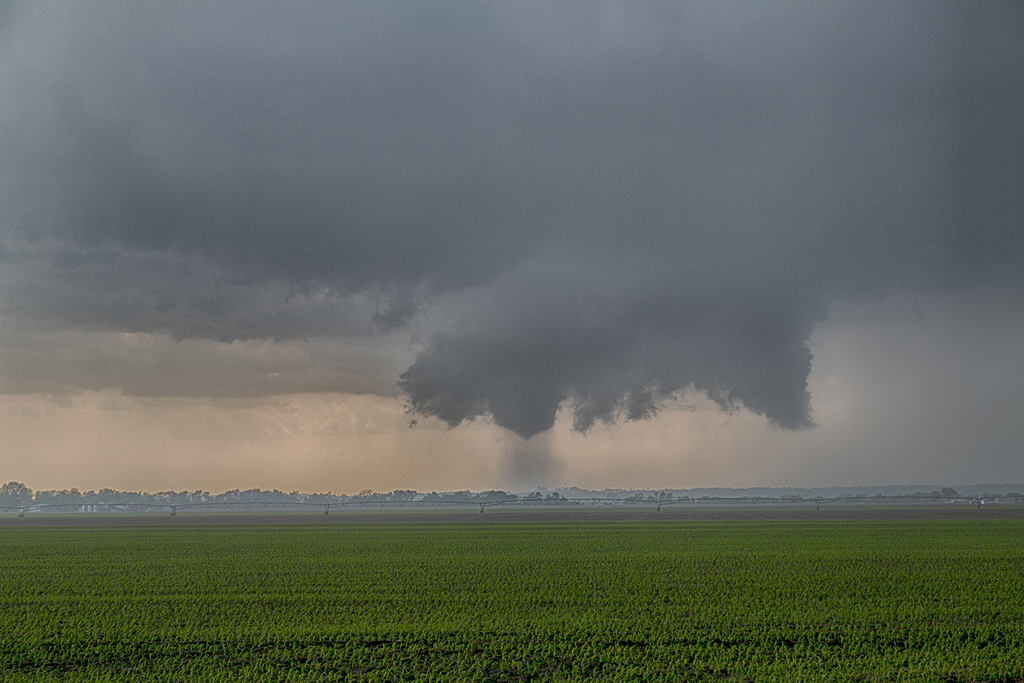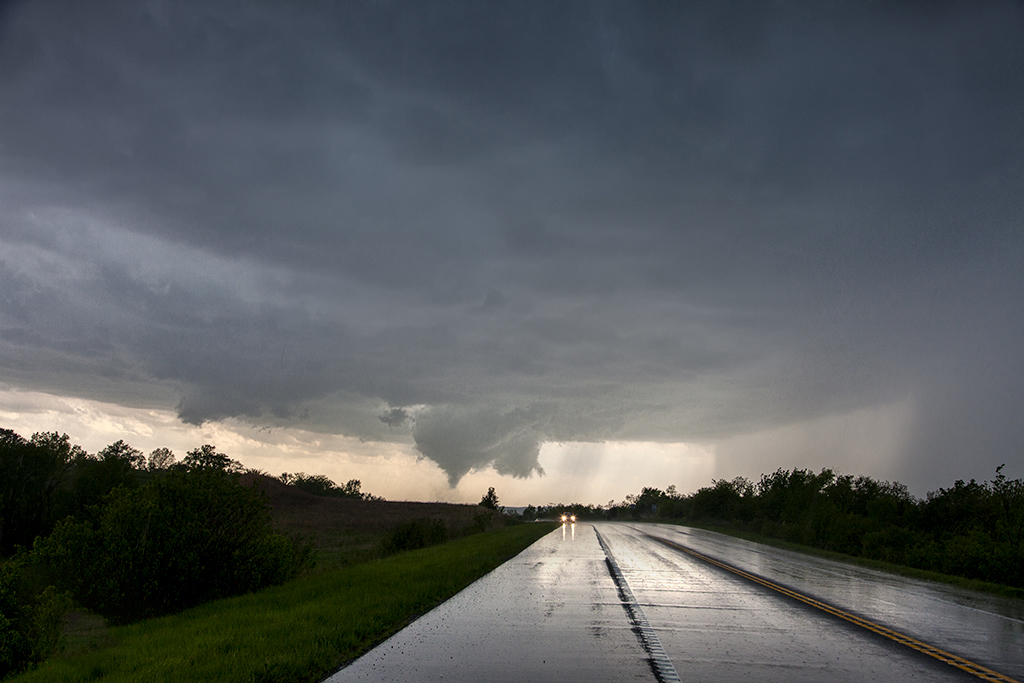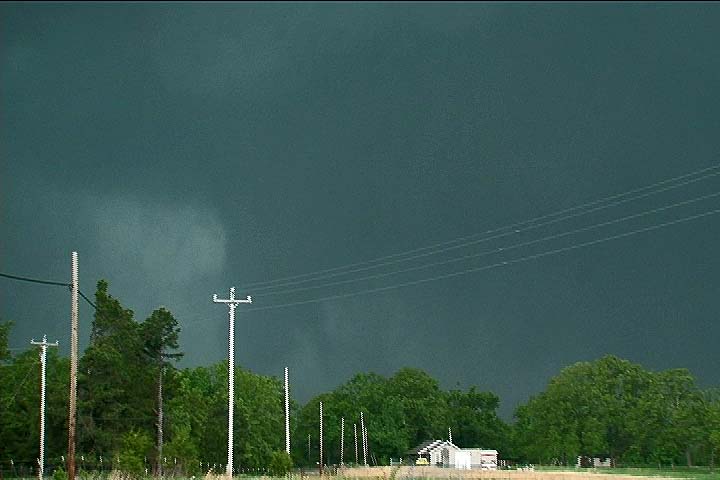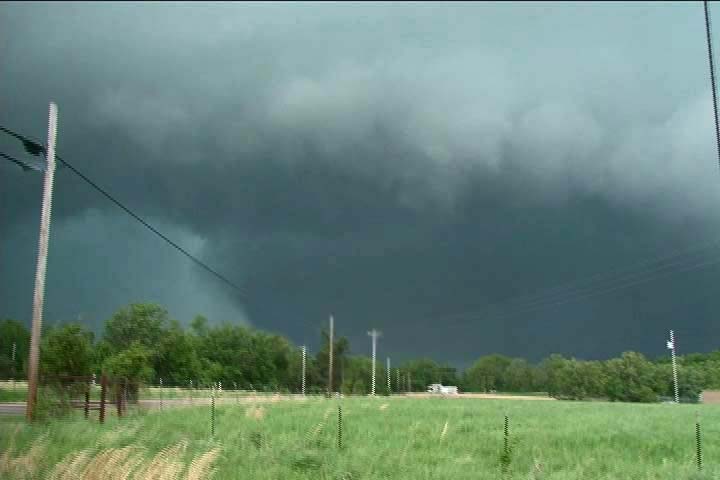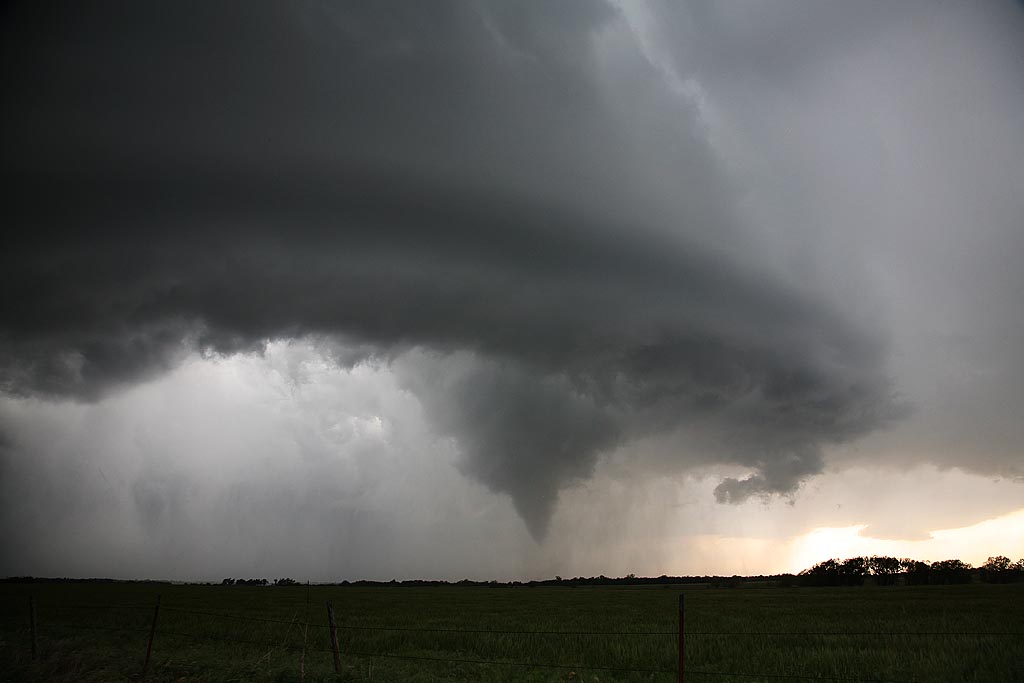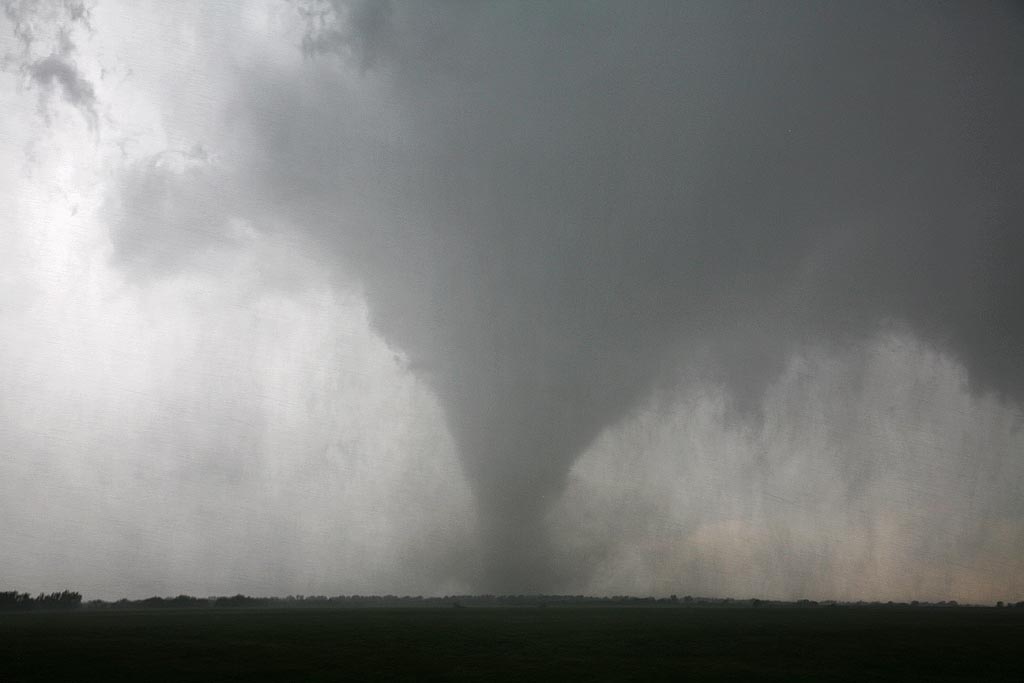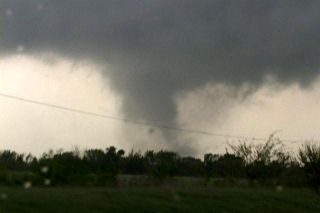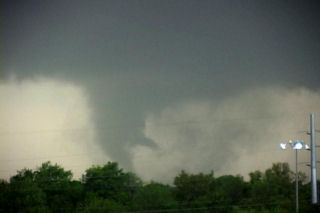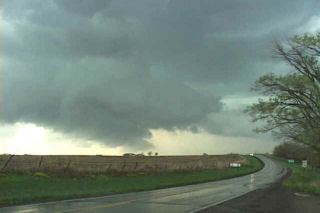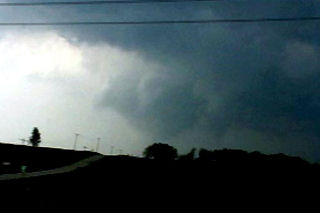
May 22nd, 2011 was a day I will never ever forget. It was one of the most horrific experiences I have ever had chasing. One engrained deep into my mind for the rest of my life. Some decisions we made this day saved our lives. To be within 5 blocks of one of the most devastating tornadoes in US history and to be able to write about is not something I take lightly.
We started in Wichita, KS, expecting a big day in southeastern Kansas and southwest Missouri. Our initial target was an Independence to Joplin line. Things looked good early with ample moisture, high CAPE, and good surface winds. I was afraid of the weak upper level flow not venting precip far enough downwind to keep storms from being HP and quite messy, and in the end, this was exactly what got us in trouble.
The first storms went up near Independence, KS and were quite explosive. They turned into a pile of outflow dominant cores quickly and were impossible to chase. These highly electrified cores were fun to watch as the CGs bounced around but updrafts never looked like they were ready to drop a tornado. Just too much outflow out of control, and too HPish.
As we moved from storm to storm, we continued eastbound towards the Missouri border as outflow spewed south of us. We knew we had to get back south and east of the OFB or we were in for a long evening. Storms would develop on the dryline to our south and move northeast, crossing the boundary, spin, become undercut and weaken. We chased a number of these cores, slowly moving east through the towns of Rosewood, Columbus, and Cherokee and into Missouri.
As we continued into Missouri, northwest of Joplin, one storm interacted with the boundary, developed a well shaped wall cloud, and became tornado warned. It pummeled us with large hail golf ball/tennis ball sized, but also crossed into the cold air and weakened. This was the first storm that became tornado warned in Joplin.
What happened next occurred at a time we were not really chasing, but with our guards up at all times, as one should. We came southeast into town and dropped south on Range line Road, (71Business) not aware of what was soon to happen to our west. A storm was developing on the dryline and started spinning before it hit the OFB. As it hit the boundary it became violently tornadic in 15 minutes! The rest is a historical section in US tornado events. This storm turned hard right along the rolling spinning outflow boundary and quickly developed supercellular features and was extremely wet. HP storms are not fun to maneuver around as you cannot see what is going on under the mesocyclone.
Before this, we headed down Bus 71 and found a gas station to stop and refuel, and those who really needed to use the facilities were allowed out as it had been a long while since we’d taken a break. Fortunately as it happened, the attendants at the store would neither allow folks in, nor allow us to pump gas, because we were under a tornado warning from the storm that had already crossed the boundary and moved into cold air. We pondered where we could use restrooms and decided to get back into the vans and head south looking for another stop. At that point I looked at the latest radar update and the storm now had a violent hook on it. I knew we had to act and act fast! I was pretty certain there was a tornado coming at us and at a steady pace, but had NO idea how significant this tornado was.
As we continued south on Range line Road, power flashes were seen to our immediate west, only 1-2 miles away. I knew we had to do whatever we could to get out of the way and NOW! We were 2-3 miles north of I-44 and I knew we had to get there, then head east and drop south on 71 to get out of the way forever! Very heavy traffic was on the road, and traffic lights every block, so progress was very slow and the situation became more and more intense. As we progressed south, we started yelling at people to take shelter. They would point and laugh at us as we continued steadily south. I was concerned about folks at the many fast food places IN LINE to order at the drive through lanes, totally unaware of the approaching tornado. We honked, yelled, did whatever we could to inform people of the approaching danger. One guide called out to take shelter under the Home Depot covering, but looking up at the black spinning mass approaching I knew that was not an option. The Home Depot was totally destroyed with fatalities inside.
It was beginning to look like we were in big trouble when suddenly the power went out, including the traffic lights. We were moving again! We started weaving around traffic and charging towards the on ramp only a few hundred yards or so away. Just to our west, you could see wrapping rain curtains around the tornado as they hit us with 60-70 mph winds and pieces of debris falling on the vans. We knew we were in huge trouble if we couldn’t get to the on ramp that seemed miles away. The eastern edge of the tornado was getting close now!!!!! We had to head east/northeast on I-44 to get to 71 south, and that was the exact path the tornado was moving in! People were driving slow with the intense wind and rain/debris, and we had to weave around them to get east and fast. We made it to 71 south and blasted 5-6 miles south until we were clearly out of the way. Many tractor trailers were flipped and destroyed on the Interstate just up the road just seconds after we got out of the way.
Our entire tour, including the guides, were pretty shook up by what had just happened. We had no idea how intense this tornado was and found out later just how strong it indeed was, an EF5. Only after stopping for a few minutes did we start hearing reports of heavy damage and as we headed south we noted many emergency vehicles heading north towards Joplin. It would be well into the evening before we understood the true magnitude of the disaster that had occurred.
As Rich Hamel stated (and I borrowed some of his content here!), in hindsight, three seemingly random events might well have saved us:
- The gas station refusing us service. If they had, we very likely would have stayed north of the tornado.
- The decision not to shelter at Home Depot. As stated above, the Home Depot was completely destroyed.
- The power going out, taking the traffic lights down. If not, I’m not sure we could have gotten moving fast enough to get out.
We drove south and intercepted another tornado in its late stages near Southwest City, MO as the tornado moved away through the trees and debris was falling, and then continued south to Siloam Springs, AR to head west to our destination for the night in Tulsa. As we headed west from Siloam Springs, a stout stovepipe became illuminated by lightning as it crossed the highway in front of us. Debris was strewn all over with pieces of insulation, sheet metal and chunks of woods all over the highway as we maneuvered around it.
We finally called it a night after that, but had one more surprise in store. As we entered Tulsa where our hotel for the night was, we ran into a big hail core from another storm that had just popped up to the southwest. It was on top of us before we knew it and soon we were getting hammered with huge hail! We witnessed two hail stones of at least tennis ball size slam into my windshield, which literally bowed with the force but somehow did not shatter! Then off to our left KABOOM! A bright blue flash and the power went out over the entire southern part of Tulsa. A power main must have been damaged by hail is all we can guess, but of course with everyone jittery from Joplin, people were worried about a rain-wrapped tornado. In only a few seconds, the power was back on and we finally got to the hotel, ending a long, dramatic chase day.
Thanks Rich Hamel for your account and SUPERB driving this day. Thanks to all SLT guides, Tom Howley, Andrew Gardiner and Matt Jones for your steadfastness in getting us out of a horrendous situation.
(NOTE THS CHASE ACCOUNT HAS BEEN EDITED TO CLARIFY THE EVENTS OF THIS DAY.)
Here is a map from Rich that shows the path we drove to get through Joplin, along with the tornado’s path.

Here’s a shot of the Siloam Springs, Arkansas tornado courtesy of tour guest Justin Noonan:




